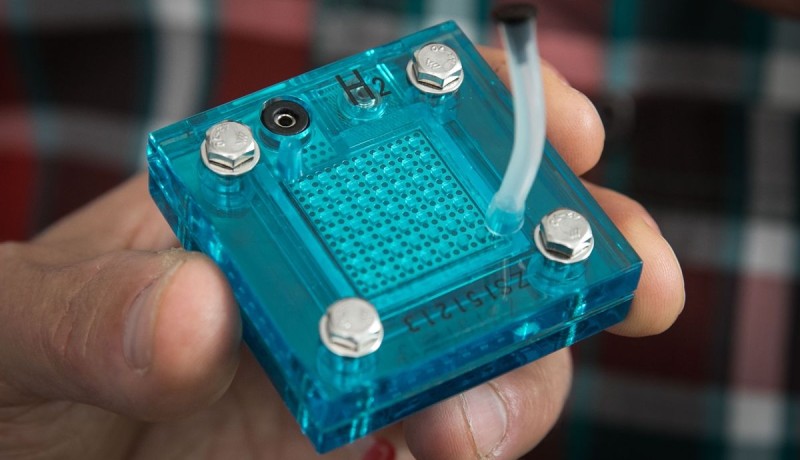Will hydrogen cars now finally arrive?
on

Researchers from the University of California (UCLA) have developed a device that can generate and store (electrical) energy from sunlight cheaply and efficiently – the fuel for environmentally friendly cars.
The device can make hydrogen cars more financially appealing for a greater number of users, because the production of hydrogen uses only nickel, iron and cobalt – elements that are less scarce and less expensive than platinum and other noble metals that are currently used for the production of hydrogen.
Clean fuel
Hydrogen is an ideal fuel for vehicles: it is the cleanest fuel we know, it is cheap and during combustion only water is produced. The invention by Richard Kaner and Maher El-Kady from the UCLA has the potential to reduce the costs of hydrogen cars considerably. Kaner and El-Kady have described their technology in a paper in the journal Energy Storage Materials.
Supercapacitor
Traditional fuel cells for hydrogen and also supercapacitors have two electrodes: a positive and a negative. The researchers however, have added a third electrode, which simultaneously serves as a supercapacitor to store energy and as an electrode for the splitting (electrolysis) of water into hydrogen and oxygen. The three electrodes are connected to a single solar panel which supplies the energy; this electrical energy can be stored electrochemically in the supercapacitor or chemically in the form of hydrogen.
Nano technology
The electrodes of the combined fuel cell / supercapacitor have been designed at nano scale in order to maximize the exposed surface to the water (for maximum hydrogen production) and also to be able to store more energy in the supercapacitor (refer to the video below for this).
Pipe dreams?
However, before hydrogen cars will become a daily appearance on the road, another technology will have to be developed that allows large quantities of hydrogen to be safely stored at normal pressures and temperatures – and therefore not in the bulky high-pressure cylinders that are currently used for this.


Discussion (0 comments)